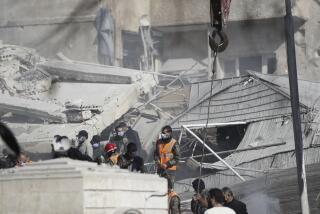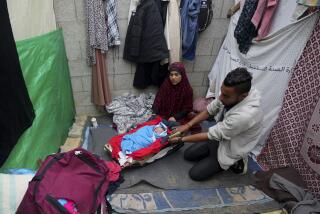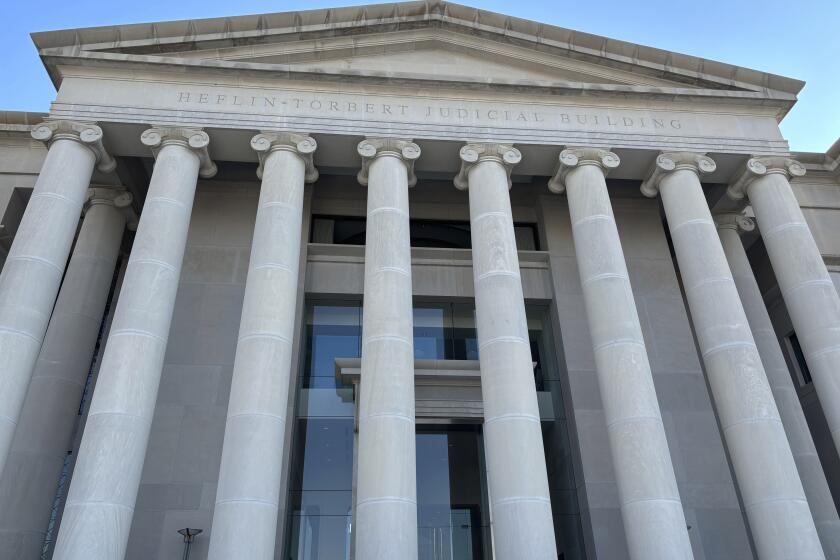Syrian army cracks down on protests in Damascus suburbs
Reporting from Beirut — Syrian tanks and troops moved Sunday to crush resistance in the rebellious suburbs of Damascus, opposition groups reported, bringing the bloody battle that has ravaged the nation for months to the doorsteps of the nation’s capital.
The fierce fighting reported outside Damascus was the latest sign that Syria’s armed insurgency — long concentrated in provincial hotbeds of revolt like Homs, Hama and Dara — has now reached the edge of the city from which the Assad family has ruled Syria in autocratic fashion for more than 40 years. That reign now appears threatened as never before, raising the prospect of a revamped geopolitical alignment in the heart of the volatile Middle East.
More than 250 people have been killed in clashes nationwide since Thursday, according to the Local Coordination Committees, an opposition coalition. The group reported at least 64 deaths on Sunday alone.
The upsurge in violence near Damascus and elsewhere comes as leaders of the Arab League, a 22-member regional confederation, left for New York with hopes of persuading the United Nations Security Council to throw its weight behind a league plan calling on President Bashar Assad to relinquish power. Russia, an ally of Syria that wields veto power on the U.N. Security Council, has said it opposes any international move toward a change in leadership.
The opposition reported Sunday that convoys of government tanks, army personnel carriers and infantry troops stormed the Ghouta region east of Damascus, a sprawling patchwork of working-class towns and farmland where rebels have been active. The military was seeking to oust armed rebels from restive suburbs such as Saqba, Kfar Batna and Hammouriya. The opposition described scenes of street fighting and urban warfare, as guerrillas ensconced in alleyways and buildings confronted the advancing troops and their heavy armor.
“There was a barbaric shelling,” said an activist via Skype from the industrialized suburb of Saqba just 3.5 miles from the capital. “What happened today was actually a war…. The army was very aggressive.”
The reports could not be independently verified because access to the battle zone is restricted. Video images from areas including Saqba and Duma have shown rebel forces in control of town squares, while sympathizers brazenly waved the green, white and black flag that predates the rule of the Assad family and the Baath Party. Opposition activists theorized that the video of towns under the control of the insurgent Free Syrian Army had enraged the government, spurring Sunday’s offensive.
“The big demonstrations in the Damascus region and the eastern Ghouta specifically have provoked the presidential palace,” said the activist in Saqba, who goes by the nom de guerre Omar Hamzawi.
An opposition activist in Duma said 50 tanks and 2,500 troops of the Republican Guard and the army’s 4th brigade had descended on the eastern suburbs. At least 23 people died, said the activist, who goes by the pseudonym Mohammed Doumany.
“It was a terrible day,” the activist said via Skype. “The situation is dramatic.”
The escalating violence prompted the Arab League on Saturday to suspend the work of about 100 monitors, who were tasked with verifying whether the government was abiding by a league-brokered peace plan.
Opposition activists said the government feared losing approaches to the capital city, though at least one traveler reported Sunday that he was able to drive from the Lebanese border to Damascus without incident. Central Damascus has been spared much of the violence. The city is considered a bastion of support for the regime and has hosted many pro-Assad rallies, even as fighting raged elsewhere.
Experts say Assad’s army remains an imposing force, despite many defections that have formed the basis of the armed rebellion. However, the military and security services are clearly stretched to put down uprisings over a vast geographic area and differing terrain. Rebels say their strength is growing. Thousands of armed rebels, including army defectors and others, now confront the regime’s security apparatus.
“The army personnel is exhausted,” said Mousab Azzawi of the Syrian Observatory for Human Rights, an opposition group. “It is a battle for the survival of the regime.”
Despite the escalating violence, most agree that the Assad regime still has considerable support, especially from the Alawite minority that includes the Assad family and much of the military hierarchy. The rebellion is centered in conservative Sunni Muslim communities, where resentment against Assad’s rule has long been simmering.
Rebels have been using guerrilla tactics, blowing up oil and gas pipelines, striking at troops from buildings and attacking transport vehicles, according to Syrian authorities, deploying the kinds of roadside bombs that became a signature part of the war against U.S. forces in neighboring Iraq.
For the second consecutive day, the official news agency reported that rebels launched a fatal attack on a bus ferrying troops outside Damascus. Six soldiers were killed Sunday in the roadside bombing, the Syrian Arab News Agency said. A day earlier, the government reported that “terrorists” killed seven army personnel on a bus.
The news agency has reported the burials of 51 army and security personnel in the last two days. The government says more than 2,000 security personnel have been killed since the conflict began about 10 months ago.
The United Nations reports that more than 5,000 people have died in the conflict.
Marrouch is a special correspondent. Special correspondent Alexandra Sandels in Cairo contributed to this report.
More to Read
Sign up for Essential California
The most important California stories and recommendations in your inbox every morning.
You may occasionally receive promotional content from the Los Angeles Times.









